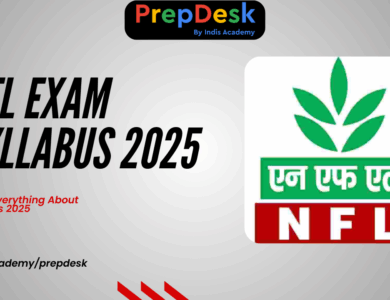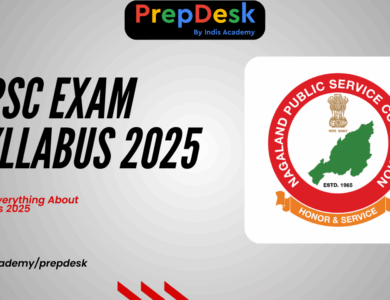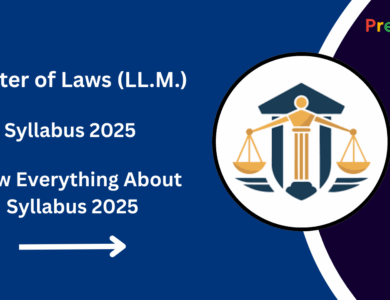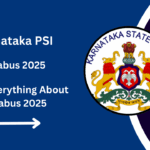CUCET 2025 Syllabus – Complete UG & PG Subject-Wise Outline
Explore the comprehensive CUCET 2025 syllabus for UG & PG courses at Chandigarh University. Get detailed subject-wise topics in Languages, Aptitude, Physics, Chemistry, Math, Biology, Commerce & CS. Includes PDF download, exam pattern, and preparation tips.
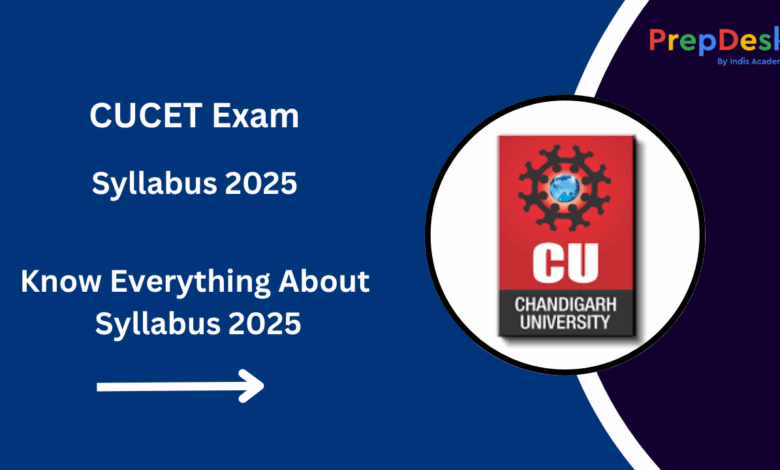
The Chandigarh University Common Entrance Test (CUCET) 2025 is a computer-based competitive exam used for admitting candidates to a wide range of undergraduate and postgraduate programs. Featuring multiple subject options, bilingual language tests, general aptitude components, and domain-specific sections, it challenges students on language skills, subject knowledge, logical aptitude, and current affairs. This comprehensive, SEO-friendly guide offers detailed insights into sections, topics, marks distribution, recommended resources, specialization-specific considerations, and preparation strategies tailored for success.
1. Exam Structure & Overview
| Section | Focus Area | Number of Questions | Time Allocated | Marks per Question | Negative Marking |
|---|---|---|---|---|---|
| A | Language Proficiency (English, Hindi, Regional) | 50 | Approx. 60 minutes | 4 | –1 |
| B | Domain-Specific + General Aptitude & GK (UG) or Domain-Specific + General Aptitude (PG) |
100 (UG) / 100 (PG) | Approx. 120 minutes | 4 | –1 |
Total exam time: ~180 minutes. The UG format includes up to six domain subjects plus general aptitude, while PG candidates focus primarily on one domain subject and a smaller general aptitude section.
2. Section A – Language Proficiency (IA & IB)
Each candidate must select two languages (usually English and another). Both are tested equally, with about 25 questions per language.
| Component | Content Covered | Approx. Questions |
|---|---|---|
| Reading Comprehension | Extracts of 250–300 words (prose, poetry, narrative) | 10 |
| Grammar & Usage | Tenses, voice, modals, prepositions, error correction | 8 |
| Vocabulary | Synonyms, antonyms, one-word substitutions, idioms | 5 |
| Verbal Ability | Jumbled sentences, paragraph arrangement, fill-in-the-blanks | 2 |
The language section assesses reading comprehension, written expression, grammatical accuracy, and everyday usage. A firm command of vocabulary and sentence structure boosts performance.
3. Section B – UG Programs
3.1 Domain-Specific Subjects (Choose up to Six)
Each domain subject contains ~50 MCQs. Candidates customize their selections according to their intended course (e.g., B.Tech, B.Com, B.Sc. etc.). Below are detailed tables summarizing popular streams:
Accountancy & Commerce
| Module | Topics Covered |
|---|---|
| Partnership Firms | Features, Accounting principles, Goodwill valuation (average, super profit, capitalisation), Dissolution processes, Garner’s Rule |
| Reconstitution & Dissolution | Change in share of profit, Revaluation of assets and liabilities, Preparation of new profit-sharing ratios |
| Company Accounts | Issue of Share & Debentures, Redemption methods, Final accounts with adjustments, Ratio analysis |
| Computerised Accounting | ERP systems, Voucher entry, Tally basics, Ledger systems |
| Non-Profit/Trust | Receipts & Payments account, Income & Expenditure account, Fund accounting, Budget analysis |
Physics (B.Sc / B.Tech)
| Unit | Topics Covered |
|---|---|
| Mechanics | Kinematics, Newton’s Laws, Work, Energy, Power, Rotational motion, Gravitation |
| Properties of Matter | Elasticity, Fluid mechanics, Surface tension, Viscosity |
| Heat & Thermodynamics | Thermal properties, Laws of Thermodynamics, Heat engines, Entropy |
| Waves & Oscillations | Simple harmonic motion, Doppler Effect, Sound waves |
| Electricity & Magnetism | Electrostatics, Ohm’s Law, Kirchhoff’s laws, Magnetic fields, Electromagnetic Induction |
| Optics | Reflection, Refraction, Lenses, Wave optics, Interference, Diffraction, Fiber Optics |
| Modern Physics | Photoelectric Effect, Bohr Model, Radioactivity, Nuclear reactions, Semiconductors |
Chemistry
| Area | Topics Covered |
|---|---|
| Physical Chemistry | States of matter, Thermodynamics, Chemical equilibrium, Acid–base theories, Reaction kinetics, Surface and Colloidal chemistry |
| Inorganic Chemistry | Periodic properties, Chemical bonding, Coordination chemistry, Metallurgy, Environmental Chemistry, d/f-block elements |
| Organic Chemistry | IUPAC nomenclature, Reaction mechanisms, Alkanes/Alkenes/Alkynes, Functional groups, Biomolecules, Polymers, Environmental organic chemistry |
Mathematics
| Topic | Details |
|---|---|
| Algebra | Complex numbers, Quadratic equations, Sequences & Series (AP/GP), Matrices, Determinants |
| Calculus | Limits, Continuity, Differentiation techniques, Applications, Integration (definite and indefinite), Differential equations |
| Coordinate Geometry | Straight lines, Pair of lines, Circles, Parabola, Ellipse, Hyperbola |
| Trigonometry | Trigonometric identities, Equations, Solutions, Inverse functions |
| Vectors | Vector algebra, Dot and cross product, Applications |
| Probability & Statistics | Permutations, Combinations, Random variables, Binomial/Poisson distributions, Mean/Median/Mode, Data Analysis |
Biology (B.Sc)
| Unit | Topics Covered |
|---|---|
| Botany | Cell structure, Plant tissues, Morphology, Anatomy, Classification, Photosynthesis, Respiration, Genetics, Biotechnology, Ecology |
| Zoology | Animal physiology, Human Anatomy, Nutrition, Circulation, Excretion, Nervous system, Endocrine glands, Reproductive systems, Genetics & Evolution |
Computer Science & IT
| Module | Topics Covered |
|---|---|
| Programming | Basics of Python, Control structures, Functions, OOP (classes, inheritance, polymorphism), Error handling, File operations |
| Data Structures | Arrays, Linked lists, Stacks & queues, Trees, Graphs, Searching and Sorting algorithms |
| Database Systems | ER modelling, SQL queries, Normalization, Transactions |
| Computer Networks | OSI & TCP/IP models, Network devices, IP addressing, Routing protocols, Basics of WLAN, Security fundamentals |
3.2 General Aptitude & General Knowledge (UG & PG)
| Section | Key Topics |
|---|---|
| Numerical Ability | Percentages, Profit & Loss, Ratio & Proportion, Time-Speed-Distance, Time & Work, Simple & Compound Interest, Ages, Data sufficiency |
| Data Interpretation | Bar/Line/Pie charts, Tabular data, Caselets, Comparison graphs |
| Logical Reasoning | Analogy, Series, Coding-decoding, Blood relations, Syllogisms, Puzzles, Seating Arrangement, Critical Reasoning |
| General Knowledge | Current affairs (last 12 months), Indian & World News, Banking & Economy, Summits/Events, Sports, Science & Technology, Art & Culture, Awards & Honours |
UG candidates get around 50 questions in this section; PG candidates get 25 General Aptitude items since their domain section is larger (~75 questions).
4. Section B – PG Programs
PG aspirants choose one subject; the exam pattern includes:
-
Domain-Specific (~75 Qs, 1 mark each) – covering complete UG-level subject including theory, applications, current issues (per NTA CUET PG syllabus)
-
General Aptitude (~25 Qs) – similar to UG aptitude + English comprehension/usage.
5. Recommended Books & Study Materials
Languages
-
Wren & Martin — “High School English Grammar & Composition”
-
Word Power Made Easy — Norman Lewis
-
RD Sharma’s Verbal Reasoning
General Test
-
A Modern Approach to Verbal & Non-Verbal Reasoning — R.S. Aggarwal
-
Quantitative Aptitude for Competitive Exams — R.S. Aggarwal
-
Lucent’s General Knowledge — Lucent Publications
Science / Commerce / Domain Subjects
-
NCERT 11–12 Textbooks for Physics, Chemistry, Biology, Maths
-
OP Tandon Chemistry / H.C. Verma (Physics)
-
Chartered Accountant’s Guide / T.S. Grewal (Accountancy)
-
NCERT / UGC Net Prep books for Humanities & Social Sciences
Computer Science
-
Let Us Python — Yashavant Kanetkar
-
Introduction to Algorithms — CLRS (basic chapters)
6. Syllabus PDF & Official Downloads
Access and inspect the detailed CUCET 2025 syllabus PDF directly on the official Chandigarh University portal:
The official PDF provides comprehensive syllabus breakdown by program, ensuring you cover every topic question-wise.
7. Preparation Strategy & Action Plan
-
Create subject-wise timetables to cover all three sections.
-
Start early (Class 11 & 12 boards included)
-
Focus on NCERT + UG-level depth for domain subjects.
-
Practice past papers & mock tests—particularly full-length CUCET/ CUET papers.
-
Sharpen aptitude via puzzles, DI, reasoning worksheets.
-
Stay updated on GK—use monthly current affairs compilations.
-
Revise grammar & English fundamentals through GT & RC practice sets.
8. Specialization Focus & Strategy
Exam focus and question types vary based on your chosen program. Adjust your strategy accordingly:
| Program | Domain Subjects Needed | General Aptitude Weight | Language Requirement |
|---|---|---|---|
| B.Tech / Engineering | Physics, Chemistry, Mathematics | High | 2 Languages (including English) |
| B.Sc (Biology / CS) | Physics, Chemistry, Biology / Computer Science | High | 2 Languages |
| BBA / B.Com / Economics | Accounts, Business Studies, Economics | High | Optional 2nd Lang. |
| BA / Humanities | History, Pol.Science, Sociology | High (GK-based) | 2 Languages |
| PG Programs | 1 Specialization (UG-level depth) | Moderate | English Mandatory |
9. Conclusion
The CUCET 2025 demands diverse skills across language, domain knowledge, logical aptitude, and awareness. A focused, consistent approach will yield strong performance. Begin early, practice smart, track progress, and adapt based on mock test insights. Remember – clarity of concepts, confidence, and pace are key.
